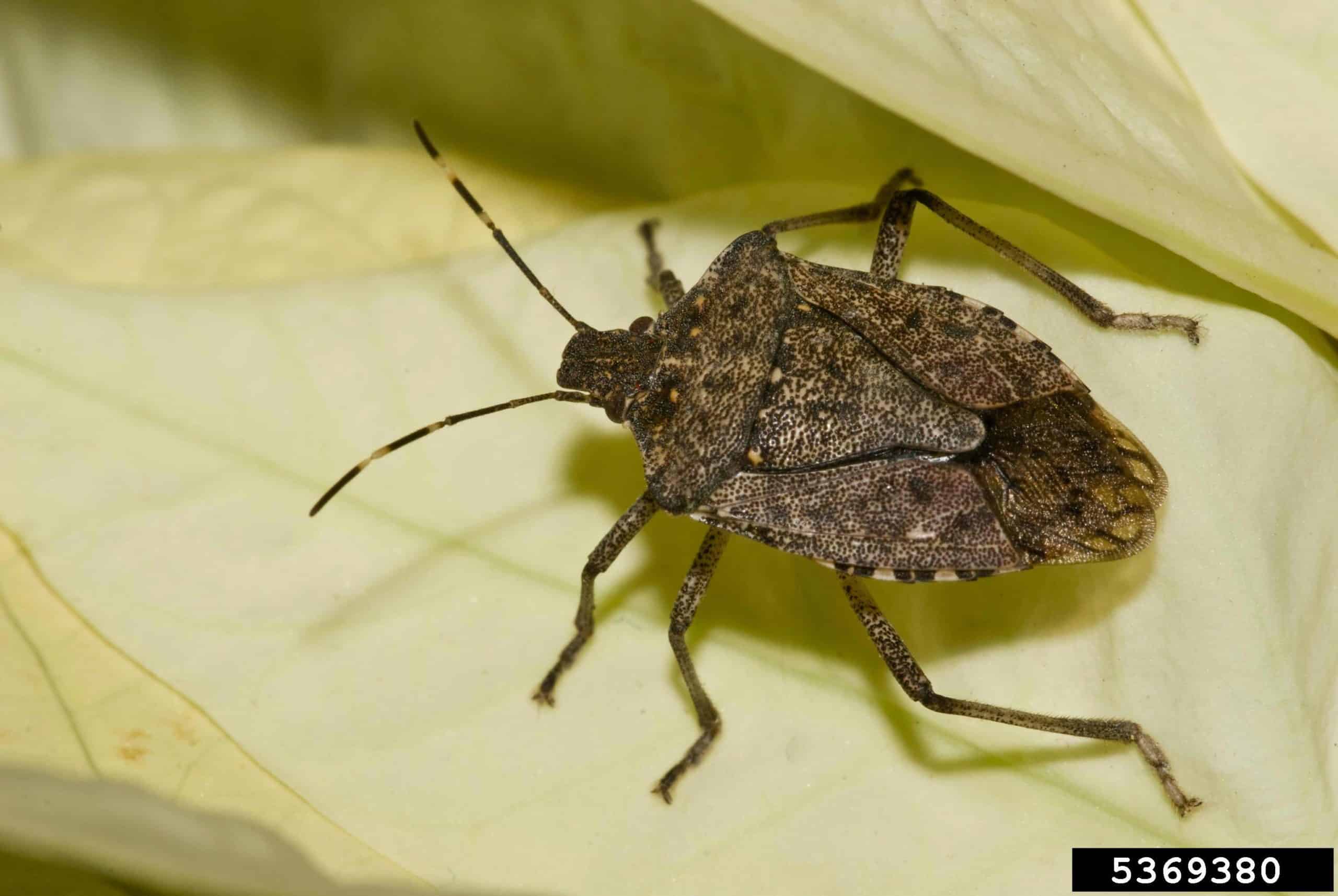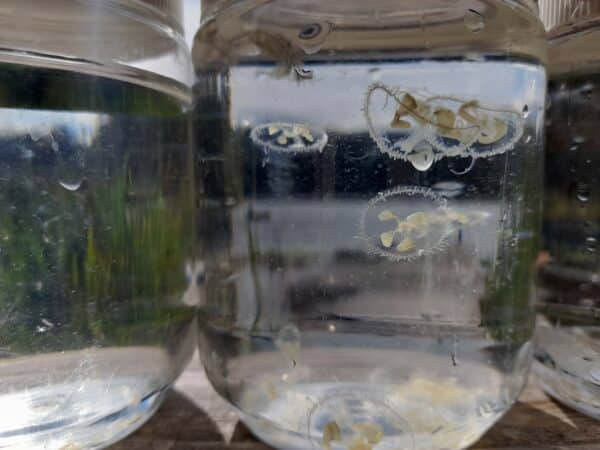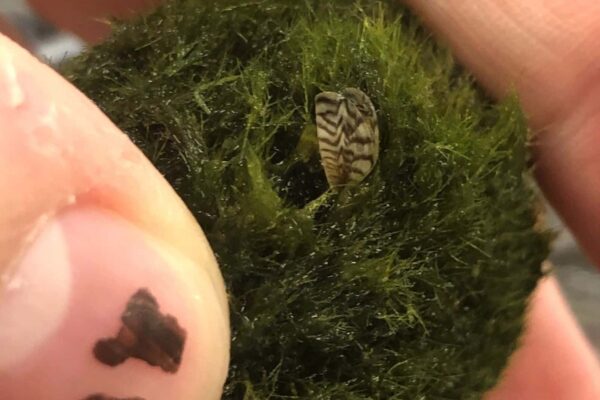By Ksenia Kolodka & Katie Swinwood | June 9th, 2022
“Working with community scientists gives us a chance to interact with people with a wide variety of perspectives and broaden the reach and scope of our research to places that we wouldn’t normally be able to work.”
Paul Abram, Research scientist with Agriculture and Agri-food Canada
Introduction
During fall time, you may have seen these shield-shaped bugs around your doorways or windows trying to find a warm place to settle down for the winter. If you accidentally step on them, you may notice they emit an awful odour. These are stink bugs – some are native, but some, like the Brown marmorated stink bug (Halyomorpha halys) are invasive.
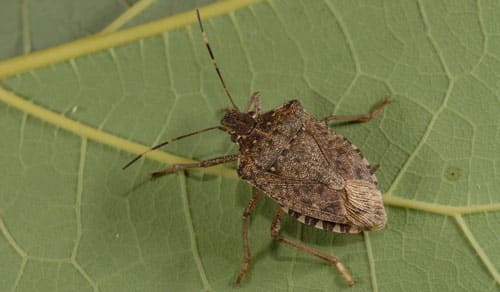

What is the Brown marmorated stink bug?
The Brown marmorated stink bug (BMSB) is an invasive agricultural pest that can be found in BC’s Lower Mainland, Okanagan Valley, Columbia-Shuswap region, and Vancouver Island. BMSBs can be identified from other native stink bugs by their shield shape, white bands on their last two antenna segments, and white markings on their abdomen. Female bugs can lay up to 400 eggs during the summer on host plants. There can be up to two generations of bugs in a year if the weather is warm enough. The bugs mature in about five weeks, and then lay eggs the following spring. BMSBs spread by “hitchhiking” on vehicles, cargo containers, wood, and packing material. They can also be found on or in buildings and other protected areas over the winter.
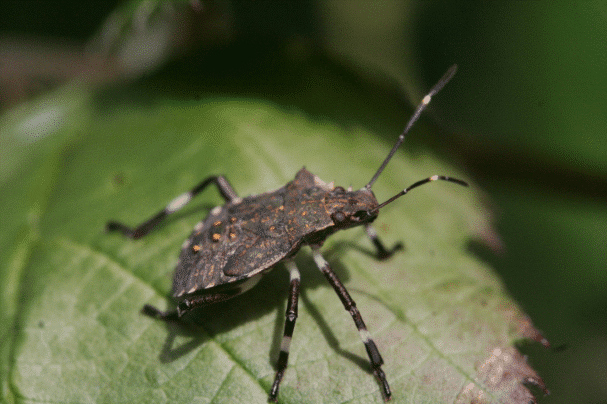
Impacts of BMSB
The BMSB has a broad diet consisting of fruits, vegetables, seeds, green plants, and tree bark. They are especially a concern for orchard farmers, as BMSBs inject enzymes into fruits and vegetables that cause them to rot. Symptoms of a BMSB infestation include: deformed and discoloured fruits and seeds, shriveled berries and seeds, delayed maturity, increased sap flow and discoloured tree bark.
Project details
The Brown marmorated stink bug is controlled in its home region of Asia by the Samurai wasp (Trissolcus japonicus). While this parasitic wasp favors the invasive brown marmorated stink bug, it may also attack stink bugs native to British Columbia. The Samurai wasp was recently discovered in British Columbia and has the potential to be an effective biocontrol method for the Brown marmorated stink bug. The BC Ministry of Agriculture and Food and scientists at Agri-Food Canada are looking for volunteers to collect the eggs of Brown marmorated stink bugs and other native stink bug species from June to the end of August, 2022.
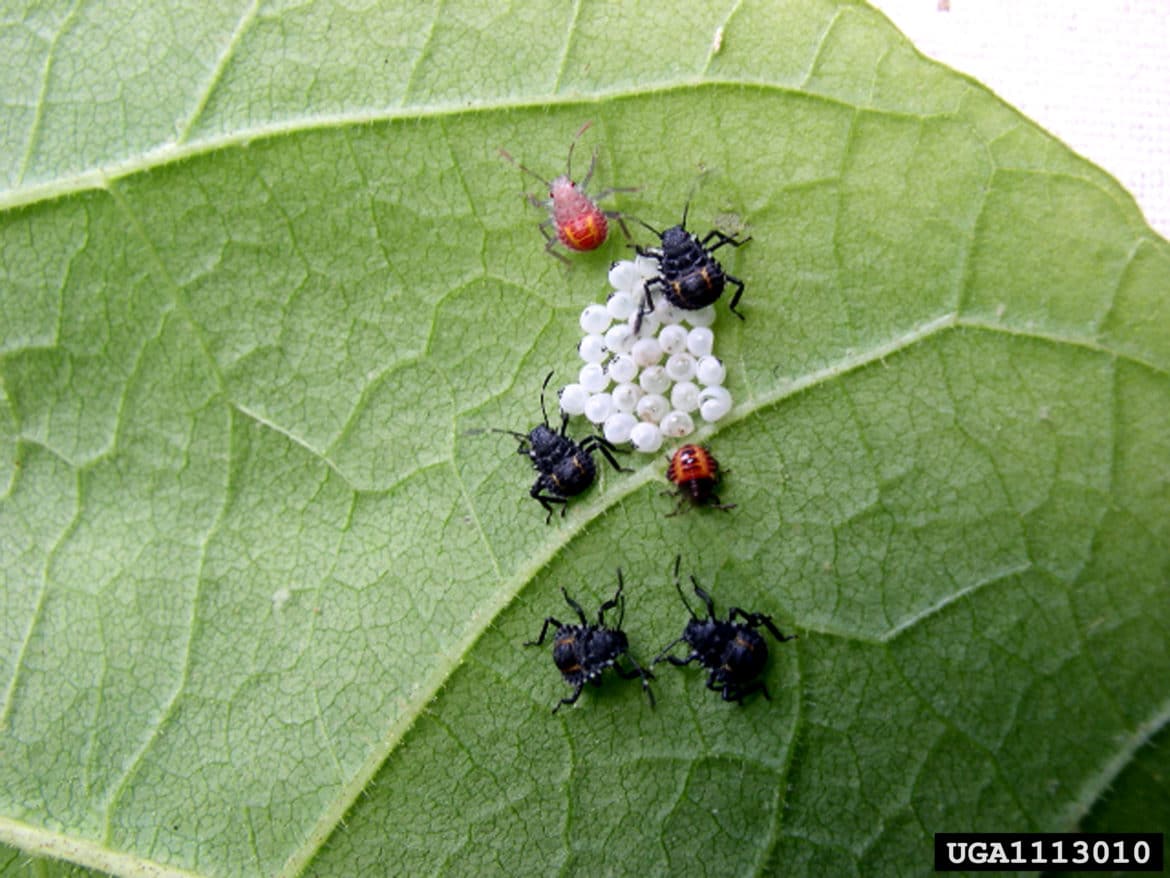
Impact of the project
Collecting the eggs will help determine whether Samurai wasps have parasitized stink bug eggs in British Columbia and if so, where this has occurred. Paul Abram, a research scientist with Agriculture and Agri-food Canada states that “Working with community scientists gives us a chance to interact with people with a wide variety of perspectives and broaden the reach and scope of our research to places that we wouldn’t normally be able to work. We often learn things about our study systems that we otherwise never would by interacting with people about their insect finds.”
Reporting info
The best places to look for egg masses are on the undersides of leaves of trees and shrubs that have small developing fruits or seeds, like maple trees, dogwoods and raspberries. However, stink bugs lay on a variety of different plant species. The total size of an egg cluster will be no larger than a dime. If you spot a stink bug around, it can be a sign that you will find eggs. If you find an egg mass, take a photo of it, put it in a small sealed container, and submit the photo and any other information here: https://forms.gov.bc.ca/industry/report-brown-marmorated-stink-bug. If what you found is confirmed to be a BMSB egg mass, then you will be contacted with instructions to send the sample to the Ministry of Agriculture and Food.
For more information about the Brown Marmorated Stink Bug:
See our BMSB fact sheet here
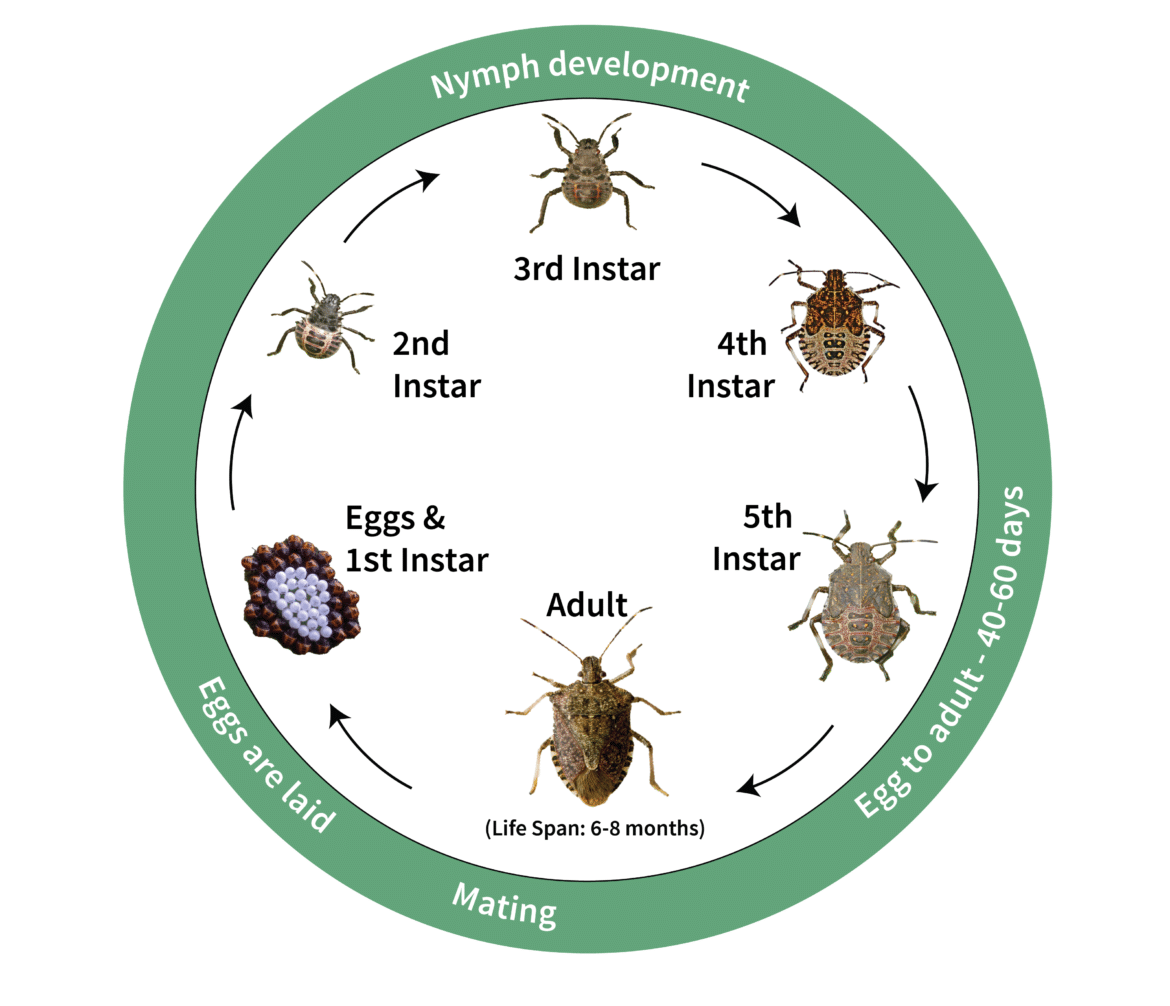
Ksenia is a Community Science Coordinator with ISCBC. She is passionate about nature conservation and taking film photos of the beautiful natural landscapes of BC. You can reach Ksenia at operations.coord@bcinvasives.ca.
Katie is the Outreach Coordinator at ISCBC. She is grateful to live, work and play in Nelson on the traditional territories of the Ktunaxa, Sinixt and Syilx peoples. In her spare time, you can find her adventuring in the woods with her dog. You can reach Katie at sci.facilitator.nelson@bcinvasives.ca.
Share


